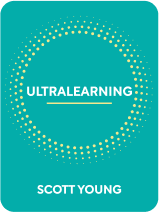

This article is an excerpt from the Shortform book guide to "Ultralearning" by Scott Young. Shortform has the world's best summaries and analyses of books you should be reading.
Like this article? Sign up for a free trial here .
Why is feedback so important to the learning process? What are the different types of feedback? What four methods can help you improve the feedback you receive?
One crucial component of ultralearning is feedback. Learning ability is improved when feedback is intense, immediate, and free of bias. However, there are types of feedback that can impede your learning that you should filter out.
Keep reading to learn about the different types of learning feedback.
The Importance of Feedback for Learning
Effective feedback is a crucial component of ultralearning. The difference between ultralearners and traditional learners is that ultralearners seek an intense level of feedback. For example, if you’re trying to master public speaking, practice speaking in front of the most challenging audiences immediately (like middle schoolers, who tend to be brutally honest). People often avoid feedback learning because of how uncomfortable it is to receive it. However, the anticipation of negative feedback usually feels worse than actually receiving it. So, it’s fear that stagnates the learning progress, not the negative feedback itself. Throwing yourself into the deep end of feedback may seem harsh initially, but it trains you to work with fear, which teaches you confidence, resilience, and commitment to your learning process.
What Is the Most Valuable Type of Feedback?
Feedback is valuable unless you process it with a bias or it lacks genuinely constructive information. There are two challenges to be prepared for when receiving feedback:
- Overreaction—Take all feedback with a grain of salt. Sometimes you’ll receive feedback that is not useful to your learning process. Be careful not to allow this type of feedback to derail your growth.
- Poor application—Be discerning about how you apply feedback. Even with useful feedback, do your best to apply it in a balanced way. Too much focus on the negative will kill your motivation, but too much focus on the positive will have the same result.
The most valuable feedback informs you that you’re doing something incorrectly and tells you how to fix it. There are three types of learning feedback.
Type #1: Outcome Feedback
Outcome feedback evaluates your progress based on outcome alone and doesn’t include detail about why you’re where you are, or how to fix it. For example, the standard school grading system is a form of outcome feedback.
This form of feedback is easily accessible, and though it lacks detail, it’s still valuable for learning progress. How? It gives you a sense of your progress when you have a specific goal you are trying to achieve. For example, receiving a grade on a test tells you immediately how well you know the material. Receiving this feedback also helps you hone in on the learning strategies that best serve your learning goal. For example, if you’ve been using flashcards to study for a test, and your test results are poor, but you achieve better results after using another study method, you know to prioritize the learning strategy that produces better results.
Type #2: Informational Feedback
Informational feedback shows you what isn’t working but doesn’t give you solutions. For example, if you’re learning Spanish, get informational feedback by chatting with people who only speak Spanish. You will know how well you are speaking by how well you are understood, but your conversation partner will not be able to tell you how to improve.
You can get this feedback easily as long as you have a resource to practice with that gives you clear feedback. That resource can even be you, as long as you are engaging with the conditions necessary to learn. For example, you might learn painting through trial and error by using a 3D model or photograph to monitor your ongoing progress.
Type #3: Corrective Feedback
Corrective feedback shows you what isn’t working and helps close the gap between where you are and where you want to be. It’s better than outcome or informational feedback because it gives you more detail about what is not working and how to fix it. However, it can be difficult to get because typically we get it from other people (whether it be a trusted peer or mentor). It’s also not the most reliable, as the sources for the feedback may differ in perception, giving you conflicting information.
It’s important to know what you are looking for from feedback, and use the form of feedback most appropriate for that goal. It’s unwise to seek informational feedback for something that is best served by corrective or outcome feedback and vice versa. For example, corrective feedback should be given by someone who is an authority on what you’re learning. If their level of mastery is not sufficient, the feedback can lead you astray. Ultralearners understand the difference between useful and discardable feedback. They maximize what is of use, and ignore what isn’t.
What Is the Least Valuable Type of Feedback?
Avoid feedback that appeals to your ego. Praise is a popular form of feedback that makes people feel good, but it’s harmful to the learning process because it is an assessment of you as a person. Even feedback not based on personal evaluation needs to be as constructive as possible and clearly applicable to the learning process.
Feedback from peers or teachers can also trigger you and impede learning. For example, if a teacher you don’t get along with gives you feedback, you may be unable to understand or integrate it even if it’s constructive due to your own negative bias. Or, you may be able to integrate it, but only with considerable effort. It’s best to focus on seeking feedback you don’t have to untangle from your biases.
How Can You Make Any Type of Feedback Work for You?
To improve feedback, consider the following four methods.
Method 1: Noise Cancellation
When you receive feedback, categorize it as noise or signal. Signal is any information that is valuable to your learning process, and noise is nonconstructive feedback that occurs for random reasons that have nothing to do with your learning progress. For example, if you post a video on YouTube and it goes viral, this is an example of noise. It would be unwise to assume that the video going viral has anything to do with quality, as opposed to unpredictable factors (like a person with a platform just happening to see the video and posting it at an optimal time for exposure).
Method 2: Deliberate Uncertainty
It’s best to put yourself in situations where you’re not sure if you will thrive or crash and burn. Failing gives you valuable feedback: Feedback you were expecting doesn’t help you grow as much as feedback you weren’t expecting. For example, if you think you’re doing well, but feedback shows you your blind spots, this is more valuable than believing you’re doing well and having that confirmed.
If you’re failing too often, adjust your environment and scale back. If you’re succeeding too often, adjust your task or environment to upgrade the difficulty level. Avoid environments that make you feel terrible and environments that make you feel really good. Neither environment will best support improvement.
Method 3: Metafeedback
This method evaluates the quality of your learning approach, rather than your performance. One aspect you refine might be your learning rate, which is how quickly you’re progressing in your learning of a topic or skill. There are two time-saving methods for refining this:
- Identify the most successful aspects of your learning approach and take note of aspects that need improvement or change so you can gear your learning strategies towards those aspects.
- Try two different learning approaches and identify the most effective of the two.
Use these methods at any time to revise your learning strategies.
Method 4: Intensive Feedback
This method is about getting lots of feedback as quickly and as often as possible. Research shows that the sooner you receive feedback, the more likely you are to achieve proficiency at something. If there’s a delay, you may practice but not actually improve, or even become worse. In the short term, intensive feedback will be uncomfortable, but pushing past this reduces fear in the long-term and supports ultralearning by training you to aggressively seek improvement.
How Does Timing of Feedback Impact Learning?
Immediate feedback is generally best. The faster you receive feedback, the sooner you are able to identify and address your mistakes. That being said, sometimes if you get feedback too quickly, your learning is adversely affected. For example, if you’re learning how to conduct a frog dissection and looking at your source material every few minutes, you run the risk of impeding your ability to retrieve that information when you try to apply the information in practice.

———End of Preview———
Like what you just read? Read the rest of the world's best book summary and analysis of Scott Young's "Ultralearning" at Shortform .
Here's what you'll find in our full Ultralearning summary :
- How a formal education doesn’t open the doors it once could
- The 9 core principles that can help you master any skill
- How to create a self-directed learning project to help you advance in your field






